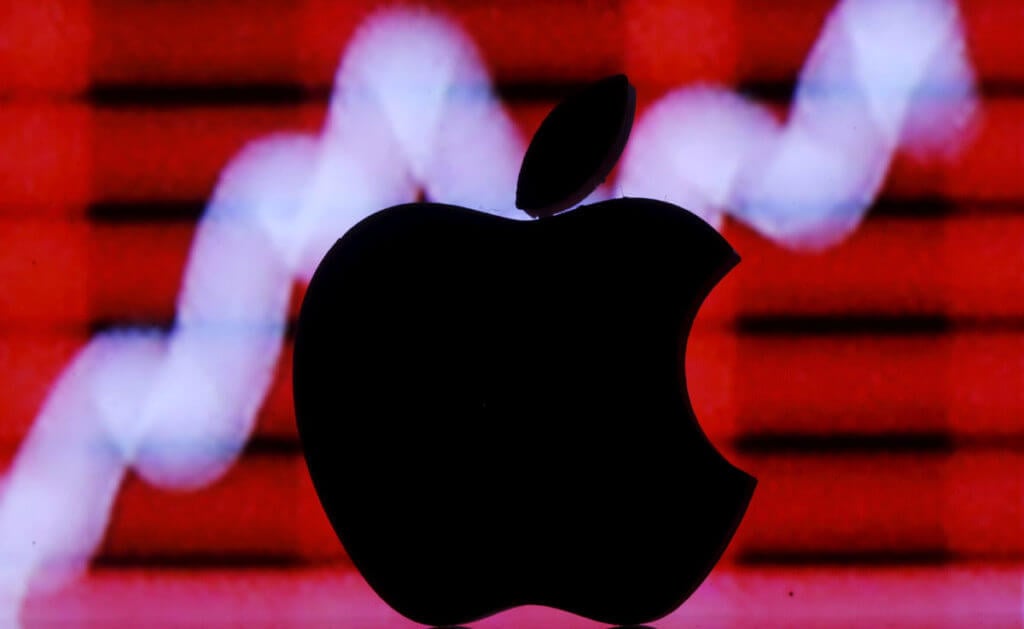These 4 Key Catalysts Pushed Apple’s (AAPL) Stock to Record Highs

Apple stock had a spectacular 2019 thanks to these four catalysts. | Image: REUTERS/Dado Ruvic/Illustration/File Photo
- Apple stock has surged by 84% since January, boosted by strong iPhone and Airpods sales.
- With no tariff threats and the popularity of the firm’s flagship products surging, Apple is in a prime position to maintain momentum.
- Analysts are seeing $300 as a near-term target due to strong technicals supported by large sales figures.
The Apple (NASDAQ:AAPL) stock is up 84% year-to-date, pushing the market cap of the conglomerate to $1.29 trillion. Boosted by iPhone 11 and Airpods Pro sales that exceeded expectations, AAPL is in an ideal position to maintain its momentum throughout 2020.
These four catalysts are responsible for Apple’s record gains.
1: Big sales figures from the iPhone 11
The main factor behind the strong performance of the Apple stock in 2019 is indisputably the popularity of the firm’s flagship iPhone.
The sales of the iPhone 11 beat expectations of both Apple and analysts. As the demand for the product surged beyond anticipated levels, Apple increased the production of the iPhone 11 merely two weeks after its launch.
The iPhone 11 was launched on Sept. 20. According to Nikkei, on Oct. 4, Apple ordered the manufacturing of additional 8 million units , raising the production by 10%.
The newly released iPhone also performed unexpectedly well in China, with Apple shipping more than 10 million iPhones to China from September to October.
Apple was initially predicted to struggle in the Chinese market due to cheaper local alternatives with better native services that suit the needs of Chinese consumers.
However, the iPhone 11, not the Pro, appealed to Chinese consumers with a lower price range . Canalys analyst Nicole Peng said that Chinese customers received the new iPhone line better than previous models.

2: Wearables and hearables market
If the iPhone 11’s production increased by 10%, Apple doubled the production of the Airpods Pro to two million per month .
The better-than-expected sales of the Airpods Pro brightened the sentiment around Apple’s presence in the wearables and hearables market, fueling the stock’s rally throughout the year.
Other competing conglomerates such as Samsung have made aggressive mergers and acquisitions to establish dominance in the hearables sector in recent years.
In 2017, Samsung Electronics acquired Harman —an audio manufacturing company that operates brands such as JBL, Harman Kardon, and AKG—for $8 billion.
Apple’s competitiveness in the wearables and hearables space with products like the Apple Watch and Airpods increased the confidence of investors in the diversity of the company’s operations.
3: Revival of the Chinese market by avoiding tariffs
For Chinese consumers, the iPhone 11 is already considered to be pricey at $775 . The Pro model starts at $1,227, going as high as $1,400 with the Pro Max.
On average, top local smartphones such as the Xiaomi Mi 9 hover in the $400 to $500 range. The iPhone 11 was able to gain traction in China because it was priced similarly to other popular foreign phones such as OnePlus 7 Pro and the Oppo Reno 10x Zoom.
Before a deal was struck between the U.S. and China, however, Apple was at risk of seeing tariffs imposed on iPhones on Dec. 15.
The agreement on a phase one deal immediately relieved Apple of tariffs, which were likely to rise to as high as 15%. Even a 10% price hike due to the tariffs would have significantly reduced the competitiveness of the iPhone in regards to prices in China.
Wedbush analyst Dan Ives said earlier this year that Apple had the most to lose if a deal was not agreed upon by the U.S. and China.
#4: Optimistic technicals
Chartists foresee the Apple stock moving towards the $300 level in the medium-term primarily because of its positive reaction to pullbacks.
Every time the Apple stock recorded a minor correction to its 20-day moving average, it followed up with an upwards movement. It indicates that traders are looking for opportunities to buy the dip , according to technical analyst Bret Kenwell.